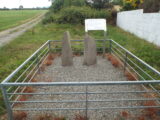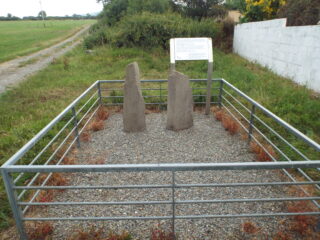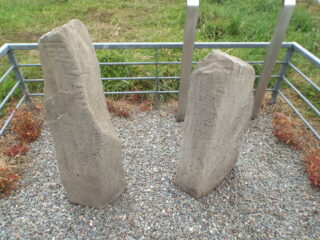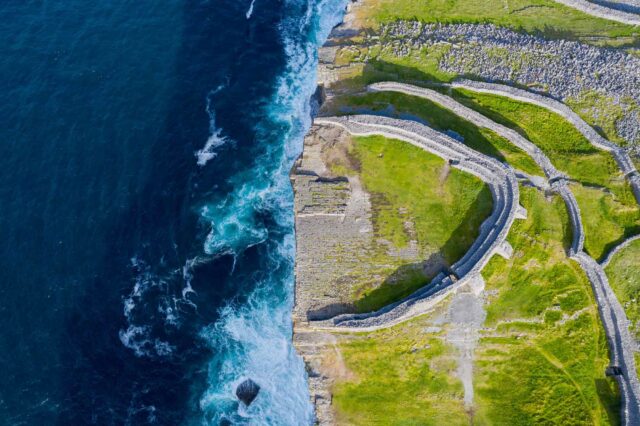Tullygarran Ogham Stones
Ogham Stones that were once found by an ancient burial ground
Unguided sitesFógra
WARNING: It should be noted that these sites are unguided and a level of care and caution should be maintained during all stages of your visit. The Office Of Public Works (OPW) will not be held responsible for any damages, injuries, or losses that occur
Tullygarran Ogham Stones
The two Ogham Stones at Tullygarran originally came from Ballinrannig further west on the northern side of the Dingle Peninsula. They were discovered there in 1848 after a storm uncovered an ancient burial ground overlooking Smerwick Both stones were moved to Tullygarran by Lord Ventry in the 19th century to decorate his residence at Chute Hall.
Ogham is an ancient Irish alphabet and our earliest written source for the Irish language. The Ogham alphabet uses a script made of lines cut on, across, or either side of a central 'stem' line. Ogham inscriptions were usually written vertically and are read from bottom to top. Ogham stones appear to have been erected either as memorials or territorial markers and usually record the name of a person with a standard formula such as: “X son of Y, member of the tribe of Z”. Although the alphabet was designed for the Irish language, a few Latin inscriptions in Ogham also survive in Ireland. There are about 400 surviving Ogham inscriptions. Approximately 350 of these are in Ireland with the largest number of Ogham stones located in counties Cork, Kerry, and Waterford. Around 50 Ogham inscriptions have been discovered in Britain with Ogham stones located in Wales, Scotland, The Isle of Mann, and in Cornwall and western England.
Both stones at Tullygarran are approximately 1metre tall. The inscription on the first has been transcribed as: LUBBAIS MAQQI DUN....S ("of Lubbais son of Dun...s"), the second reads CCICAMINI MAQQ(I) C(A)TTINI ("of Cíchmuine son of Caitne").
Visit Historic Environment Viewer for more information on Tullygarran Ogham Stones
Protect our Past - Click here to read about the importance of protecting our country’s unique heritage sites
This national monument is protected in accordance with the National Monuments Acts 1930 to 2014
Gailearaí
Suíomhanna cóngarach
Inis Cathaigh agus an tIonad Cuairteoirí
Faigh amach faoi Stair, Miotas agus Finscéal Inis Cathaigh
Timpeall 38.3 km ón
Caisleán Dheasumhan – An Caisleán Nua Thiar
Áit a ndéanann fuaimeanna ragairne na meánaoise macalla timpeall na mballaí
Timpeall 44.0 km ón
Caisleán Eas Géitine
Fothrach a bhíodh ina dhaingean ag Iarlaí Dheasumhan
Timpeall 57.9 km ón



